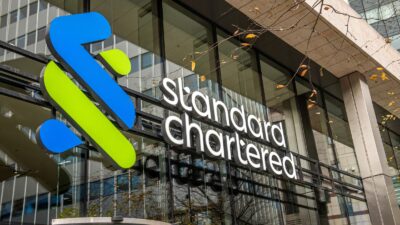BT (LSE: BT-A) (NYSE: BT.US) has managed to chalk up an impressive rate of growth over the past five years. Since 2011, the company’s earnings per share have grown at a compounded annual rate of around 11%.
However, City analysts expect BT’s growth to slow over the next two years.
Unfortunately, the company’s valuation fails to reflect this as BT still trading at a premium to its wider peer group.
Falling earnings
According to City figures, BT is set to report earnings per share of 30.4p for fiscal 2016, the company’s next full financial year.
For fiscal 2015, the company reported earnings per share of 31.5p, a year on year decline of 4%.
This year on year decline in earnings per share is a direct result of BT’s planned £2bn rights issue, which is intended to finance the acquisition of mobile network operator EE.
Indeed, while earnings per share are predicted to fall this year, analysts believe group pre-tax profit will jump by 19.3%. Revenue is set to tick higher by 0.3%.
Crunching numbers
As BT’s earnings per share are set to fall this year while profits rise, it’s not really appropriate to value the company on a P/E multiple.
For example, BT is trading at a forward P/E of 14.9, which looks expensive when compared to the company’s falling earnings per share.
With this being the case, it makes more sense to value BT using the enterprise value to earnings before interest, tax amortization and depreciation (EV/EBITDA) metric.
The main advantage of using the EV/EBITDA ratio is that it is unaffected by BT’s capital structure. What’s more, the ratio takes into account other items such as debt and excludes non-cash charges like depreciation.
International comparison
So how does BT stack up to its international peers on an EV/EBITDA basis?
Well, according to my figures BT is currently trading at a forward EV/EBITDA ratio of 7.2. The company’s international peers, AT&T, Deutsche Telekom, Orange SA, Telecom Italia and Verizon Communications, currently trade at an average forward EV/EBITDA 6.3.
Further, these five international players are each set to report revenue growth of 1.4% on average next year, eclipsing BT’s glacial revenue growth of 0.4%.
On this basis, BT is 14% more expensive than its international peers.
Other opportunities
BT’s growth over the past five years has been nothing short of impressive. But now the company’s growth is slowing, BT looks expensive compared to its international peer group.
Moreover, some of BT’s domestic peers, such as Talktalk (LSE: TALK) and KCOM (LSE: KCOM), offer investors more bang for their buck.
Specifically, Talktalk’s earnings are set to expand by 73% during 2016 and 42% during 2017. Based on these figures the company is trading at a relatively subdued forward P/E of 24.3 and PEG ratio of 0.3.
Meanwhile, KCOM trades at a forward P/E of 13 and supports a dividend yield of 5.6% compared to BT’s yield of 3.1%.







